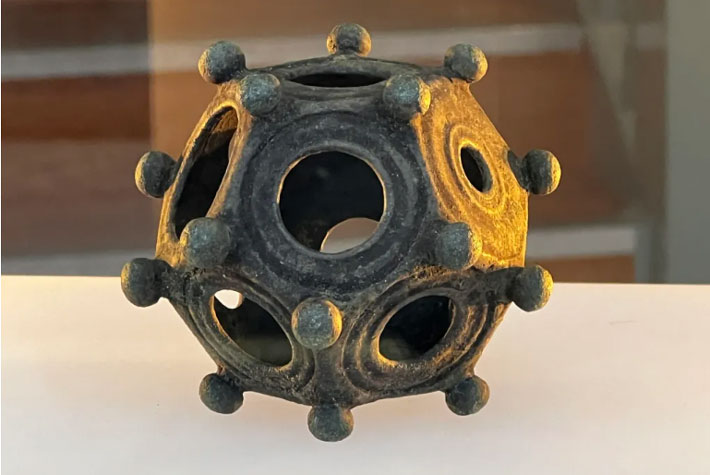Enigmatic items indeed. At least 116 of them have been found across Europe, with 33 found in Britain… all associated with Roman occupation between the 2nd and 4th centuries. There’s also one icosahedron, found in Germany.
They range in size from 4 to 11 centimetres (1.6 to 4.3 in). None have any inscribed letters or numbers and they rarely show any sign of wear from usage, usually being in excellent condition. Several have been found in coin hoards, suggesting that they were valued objects or had some association to coin-making skills. Their prestige is supported somewhat by similar objects made of gold having been found along the Maritime Silk Road in South-East Asia that are presumed to reflect Roman influence on later trade with China. Curiously, there’s no mention of such objects in any contemporary accounts, nor any depictions of them.
They’re too light to function as a weapon, such as a mace-head (unless purely symbolic or ceremonial); the lack of any markings tends to rule out any kind of measurement device; at least one of them lacks the holes needed for use as a spool-knitter of the kind used in glove making (for which bronze would be an unusual choice, and the technique is unknown before the 16th Century); the extent to which they seem to have been valued makes it unlikely they were some kind of toy.
That leaves the possibilities that they had a purely decorative or symbolic use and may have had religious significance or seen use in fortune-telling or divination. One other suggestion is that they may have been produced to test the skill of metalsmiths, demonstrate proficiency as part of a qualification process, or as showpieces to prospective customers.







